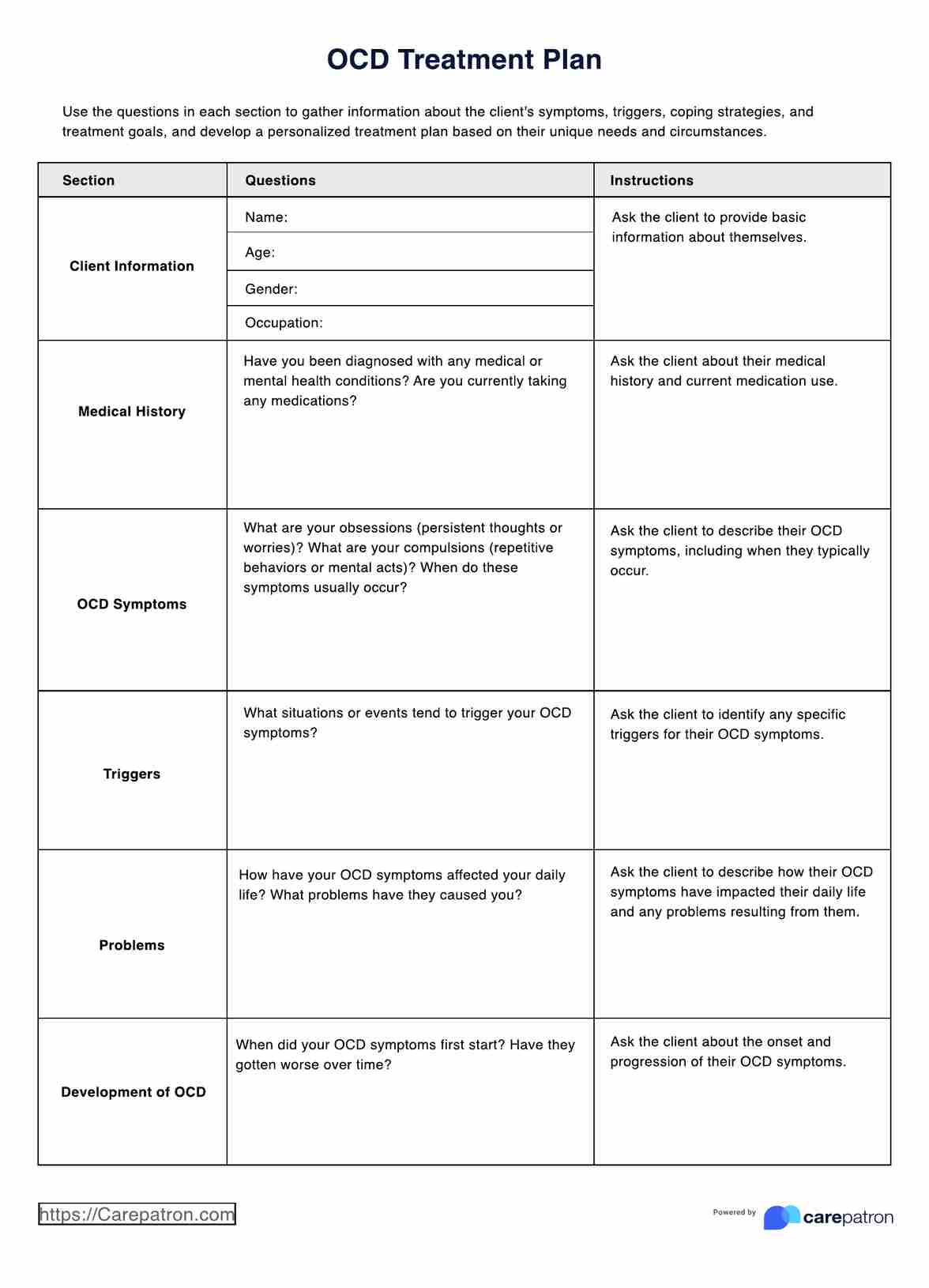When a person is diagnosed with OCD and seeks treatment to manage their symptoms, an OCD treatment plan is typically used.

OCD Treatment Plan
Get a free printable OCD treatment plan. Use this OCD treatment plan to manage OCD symptoms and develop a personalized plan for OCD treatment.
OCD Treatment Plan Template
Commonly asked questions
A mental health professional usually develops an OCD treatment plan in collaboration with someone suffering from OCD. It entails gathering information about the individual's symptoms and setting specific goals and strategies for managing them.
OCD treatment plans are beneficial because they provide structure for treatment, aid in tracking progress over time, and encourage collaboration between the person suffering from OCD and their mental health professional.
EHR and practice management software
Get started for free
*No credit card required
Free
$0/usd
Unlimited clients
Telehealth
1GB of storage
Client portal text
Automated billing and online payments











